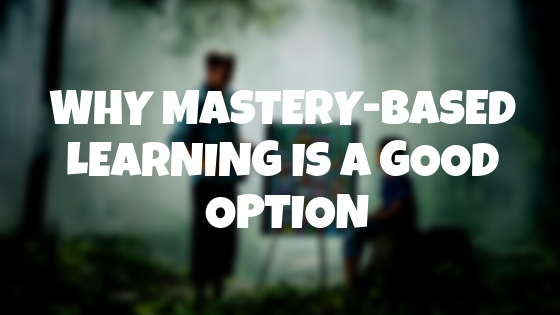Something has changed in education content delivery, thanks to companies like Google, Khan Academy, MIT. When these industry leaders (and others) started offering high-quality educational tools for free, more followed. Yesterday’s muffled plea for equality in educational opportunities regardless of economic status is today’s reality. A rising tide raises all ships became a call for action rather than a dreamy quote.
This isn’t your mother’s schoolhouse anymore.
Think about the transformative teaching that comes from Google Earth, GAFE, Khan Academy, Scratch. A decade ago, they’d be expensive for-fee programs. Now, they’re free.
That’s just the nose of the educational camel. There are many more programs and widgets and tools that educators can take advantage of without cost, thus freeing up their limited funds for other programs, like elementary school music and art. Here are a few you want to take advantage of:
Online eLearning
Don’t you wish you had access to a Blackboard-type program that makes it easy to teach online, simple for students who miss class to catch up? What about GoToMeeting-style get-togethers where teachers show parents how to use online grade books or order lunches or access the nannycams mounted in preschool. Conventional Wisdom says parents will find you if they need help, but the truth is, every November, just weeks before report cards go out, a slew of parents swarm your room to find out how to see if their child is going to survive. Too bad these virtual training programs are the province of colleges and businesses.
They aren’t anymore. Here are two ways to meet parents and students online, on their schedule, where they need you:
- Set up a Google Hangout. Yes, users must have a G+ account, but once that’s in place, you can have virtual Hangouts for parents or students providing training, updates, how-tos and question-and-answers.
- Record information to a YouTube (or Vimeo) channel on any topic. This can be done directly in YouTube’s website, to your iPhone or iPad with the free Vine app, or using a free recording program like Jing or Screencast-o-matic. Which you select depends a lot on what you want to accomplish.
Backchannel Communication
You heard about those clickers that collect feedback from students on the lesson being taught. They push a button on a handheld device to indicate they do or don’t understand something you’re teaching. Then, the teacher knows to slow down, figure out a different way to communicate an idea, or pick up the pace. How cool is that? And why do they cost so much?
They don’t anymore. In fact, if you use Socrative, they’re free. You can even have the results populate anonymously to your SmartScreen. You’ve seen that on TV, where tweets are posted on a show screen to share with viewers. Imagine that in your classroom. Pretty cool, hunh?
BTW, you can use Twitter instead of Today’s Meet or Socrative. Have students keep a Twitter window open during your class, post their 140-character feedback using a #hashtag like #needhelp, keep the Twitter stream active on your Smartscreen, and you have a backchannel device that’s also the ultimate of hip.
Parent Communication
You don’t need an expensive program like Veracross or Schoology to keep parents in the loop about tests, events, projects. Here are a few ideas that work just as well:
- Set up a Google Calendar, embed it into your class website or blog, and let parents know it’s available with all due dates. You can color code by grade, class, importance. Whatever works.
- Set up a Twitter stream with hashtags to differentiate between #homework, #projects, #important–whatever you choose. Once parents get used to Tweets, they will appreciate their cogent pithiness
Rubrics for Assessment
There are so many ways to create assessment rubrics that don’t include struggling over a Word table. How about these options:
- Use a free online rubric creator like Rubistar. Fill in the table on line and print digitally. Or use one that will create a rubric based on Common Core Standards.
- Create a rubric in Google Apps for Education. Like Adobe, this is highly-customizable (though takes a bit more work on the teacher part and isn’t as pretty if that’s important. I like pretty) and collects results for you to your GAFE account.
All of these can be shared, printed, most of them embedded. They are scalable and flexible to your unique needs.
Homework Dropbox
A homework dropbox doesn’t have to be through the school fee-based website account (i.e., Schoology). If your school has Google Apps, create your own private Drop Box for student homework like this:
- Each student creates a folder called ‘Dropbox’ that is shared with you
- Every time they want to submit work to you, they copy/move it to that folder so you can view and comment
Yeah, it’s that simple. There are other ways–email, a Discussion Board (when the homework is not private. Great for engendering conversation among students)–but this is the closest to a real homework dropbox.
That’s five options, plenty to get started. Any questions–leave a comment or email me. I’ll give you more detail.
Jacqui Murray has been teaching K-18 technology for 30 years. She is the editor/author of over a hundred tech ed resources including a K-12 technology curriculum, K-8 keyboard curriculum, K-8 Digital Citizenship curriculum. She is an adjunct professor in tech ed, Master Teacher, webmaster for four blogs, an Amazon Vine Voice, CSTA presentation reviewer, freelance journalist on tech ed topics, contributor to NEA Today, and author of the tech thrillers, To Hunt a Sub and Twenty-four Days. You can find her resources at Structured Learning.




































Although your solutions are great, I want to point out that Schoology is actually free for individual teachers, it is only paid if an entire school or district purchases an Enterprise solution.
I didn’t know that. My school used to use it, then moved on. I liked it a lot. Thanks for letting me know, Shannon.
Hi Jacqui,
After launching our Audience Response System we got a lot of feedback from teachers or educational users to ask us: can we have a free deal?
In June 2014 we decided to do that. Educational users are free. And personal – as a founder – let keep the school budget(s) as much inside the school systems. Better for our children.
http://www.voxvote.com/offers/2014-education-teachers-for-free
Regards
Vincent van Witteloostuyn.
VoxVote – The Voice of Your Audience.
Thanks for sharing this, Vincent. It looks great.
Better than Jing or ScreenCastOmatic, My Screen Recorder is one of the best screen recording software. It records your screen and audio from the speakers or your voice from the microphone – or both simultaneously. The recordings are clear and look great when played back on your website, uploaded to YouTube or used in your presentation. One thing often overlooked – It will record directly to standard compressed format that works with any video editor or any tool, no conversion required. And, the file sizes are small, making them easy to upload or distribute. Finally, contact the publisher about educational pricing.
http://www.deskshare.com/screen-recorder.aspx
Thanks for sharing this tool, Ron. Looks good.